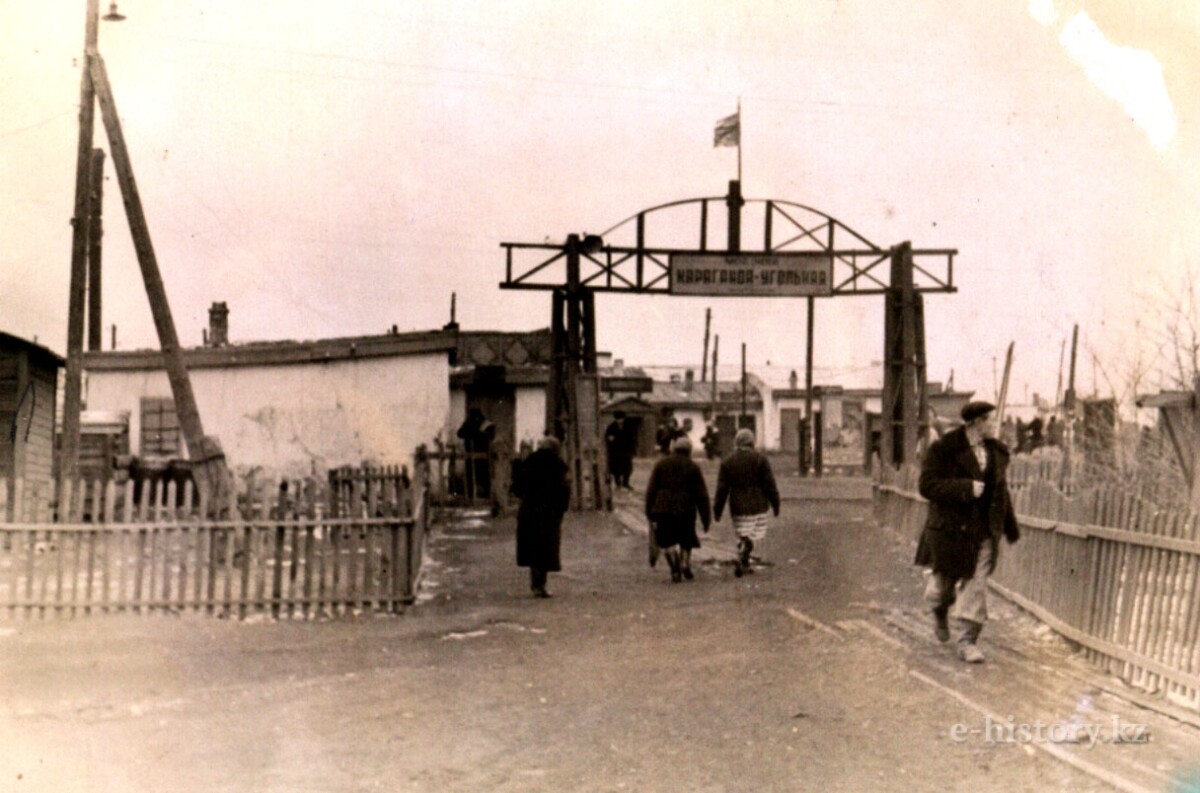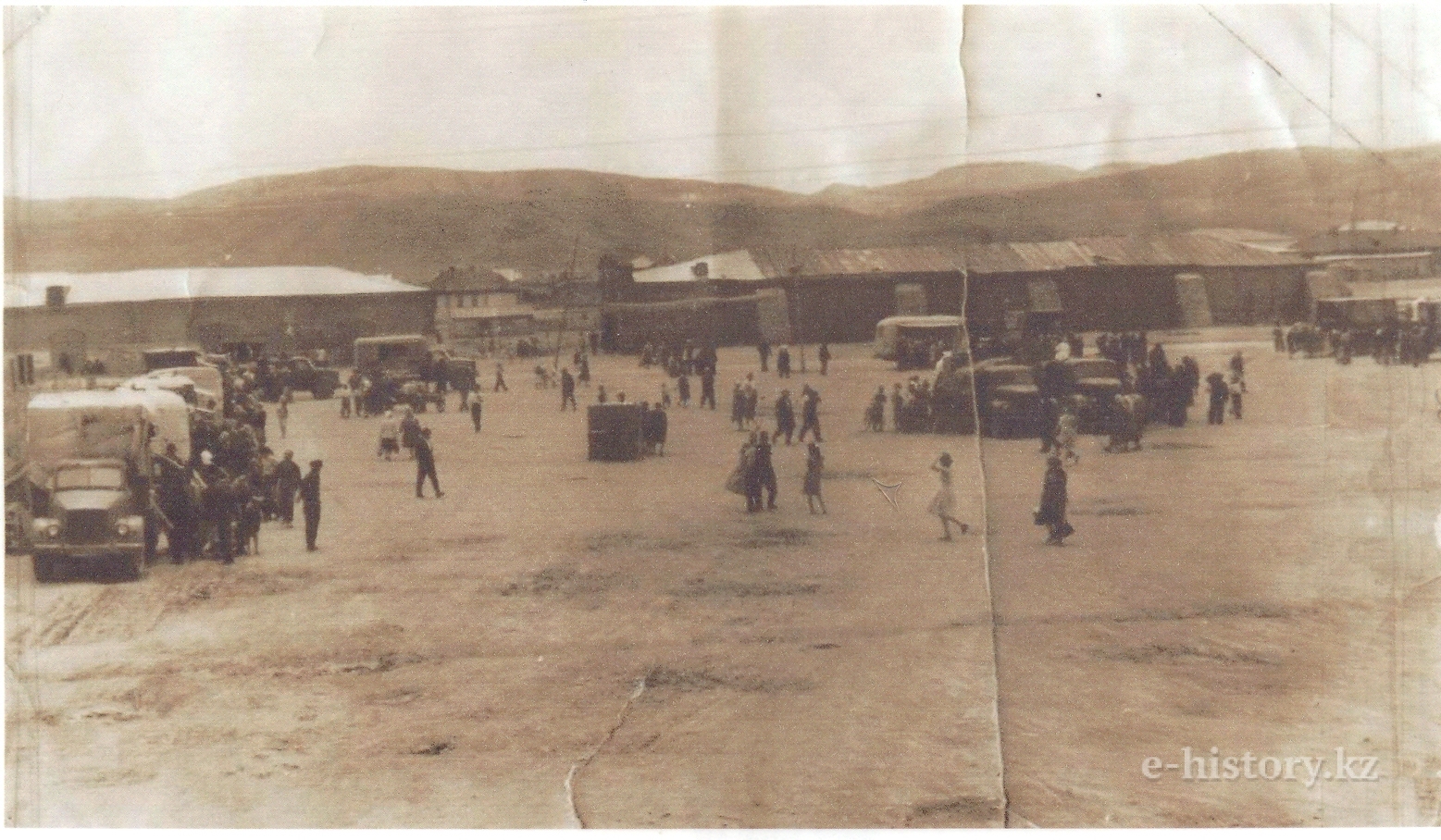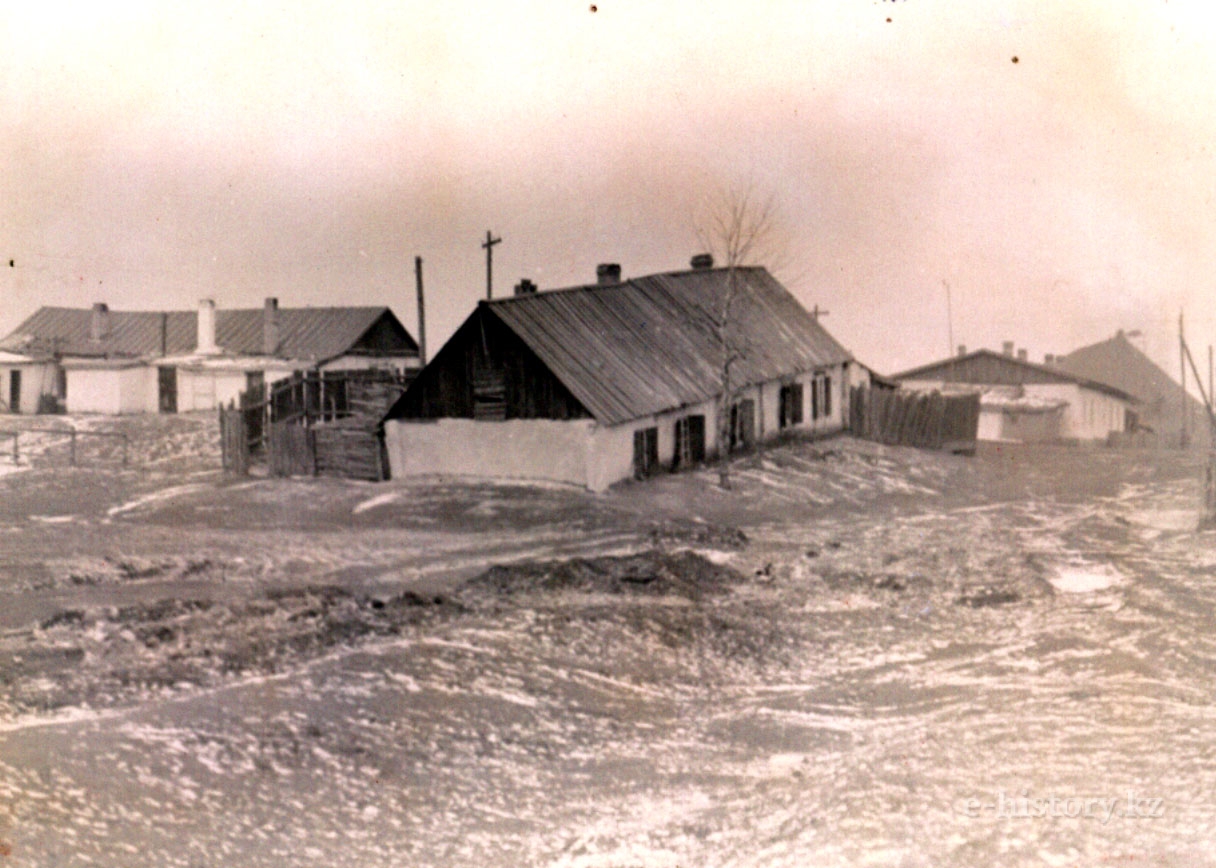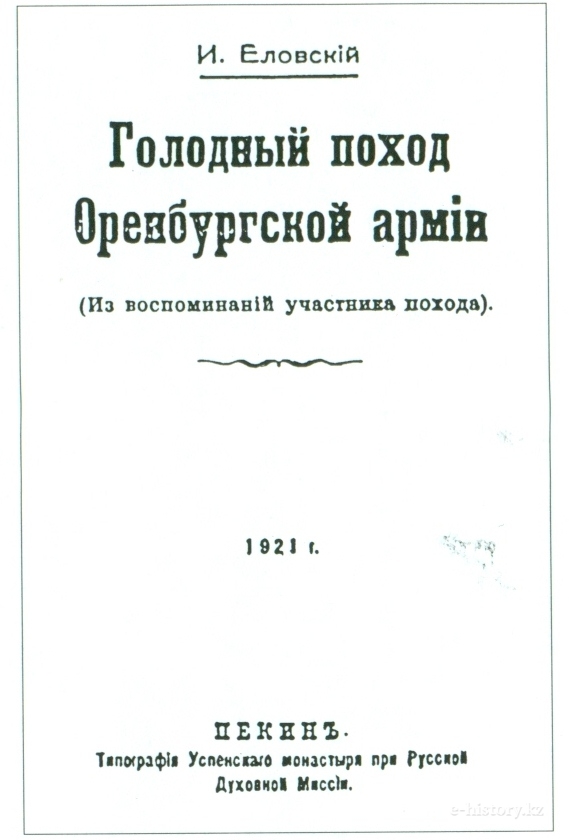
One of the components of the process of historical knowledge is the source base. Depending on the historical period, it can be represented in many kinds of sources two or three, can have a high information density, or contain scant information about the matters interesting to researchers. However, the lack of necessary data in the source or sources themselves in certain situations can also work on the confirmation of researcher’s versions.
Source base of the Soviet era is diverse and multifaceted. Memoirs [1] and publicism [2] always took important place in it. Russian historian R. Medvedev once noticed: “…our national history is much less reflected in the documents than in the minds of people” [3]. It is seems, that it is very correct observation. Last decades this part of source of base intensively increasing. Same as 1917-1991s period of time it has certain thematic tendency, filling the available emptiness. The circle of the authors of this kind of literature is expanded. Among them there are not only winners of awards, i.e. officially recognized society faces, but also those who were rejected by the society. The circle of the authors expanded due to the represents of middle and lower level of Party and Soviet nomenclature, which was not typical for Soviet era.
The author of this statement tried to look at the history of Karaganda and Karaganda region through memoirs and nonfiction literature, focused on library funds of Archive of the President of Kazakhstan. Chronological scope of this article is 1917-150s. This period was highlighted in the most accessible sources of the author, published in the 20th and beginning of 21st centuries.
Difficulty in working on new material has been the inability to track all changes to the administrative-territorial division of the square, which is by far the Karaganda region: now existing reference books on the subject are not exhaustive, list of historical maps is very complicated. Therefore, the author was guided in the studied texts to well-known and fixed in historical research and geographical administrative- territorial title. Toponimical practice, unfortunately, also complicates the study of local history in the area.
Difficulties in the work on a new material was in the inability to track all changes to the administrative-territorial division of that square, which today is Karaganda region. Existing nowadays reference books on this issue is not exhaustive and the research of historical maps is very difficult. Thus, the author tended to study well known and fixed in historical research the geographical and territorial title. Toponomical practice, unfortunately, also complicates the study of the local history in the area.

Trading area, Karkalinsk city. 1950s ,Karkalinsk regional the Museum of local history. KP 189. Positive-original. Publisehd there.
One of the earliest sources in these chronological frameworks is booklet of I.Elovskii, the participant of retreat Separate Orenburg army officer of one of the Orenburg Cossack regiments. Being in the Ataman A.Dutov’s detachment he moved to China then to USA. Traces of it lost in 1927 in California. In 1921, Elovskii in Beijing in the printing house of the Uspensky Monastery in Russian spiritual mission published his memoir “Hungry campaign of Orenburg Army”. Someone known as Xinjiang (possible that it is a pseudonym) published small article “Way of the Cross Separate Orenburg army. Karkalinks Hungry steppe 1919” [4] in “The light of Asia” published in Harbin in 1937. This kinds of publication for many years were not available for the mass Russian readers, as it was written by representatives of the “white movement”, regarded as hostile to the Soviet regime. These works are not for censorship, they were written by those who have realized their defeat. Perhaps that is why the intensity of the tragedy in these texts is very high.
In his memoirs was saved the route, part of the retreating army (Cossacks moved with their families), psychological climate in the army of the broken, the climatic features of the territory on which the movement was carried out household details. It is so interesting the description of the yurts, which the author calls the tents: “The way from Karkalinsk to Sergiopol lay through Karkalinsk steppe and was very long. In the famous points on the way here there were exhibited Kyrgyz summer tents where can placed commandants stages. The appointment of his tent, certainly, was not justified, as at 30 and 40 degrees below zero was almost indifferent where to be outdoors or under the leaking summer tent of Kyrgyz without heating. The only thing that this tent was useful for is to point out the direction of the parts to follow, as well as facilitated for communication and unification of the parts. Deceased in transit paths passed for landmark commandants for burial, of course, without any religious ceremony. Commandant entrusted funeral for subordinate, his Kyrgyz headman and he in his turn to someone else”. These events relate to the end of 1919.
Many pages were devoted to Karkaralinsk in the memoirs of Soviet power of academician Shafik Chokin [5]. In the second half of the 1920s he studied at the Kazakh Pedagogical College. His description contains several themes: the nature of the region, city, household residents and confiscation of property of becks. As he recalls, "in this sleepy town the only entertainment was walking to visit relatives and friends". The value of this text is in its multidimensionality. Chokin studied from Russian teachers settlers spoke with relatives and peers, so in his memoirs present as the life of Russian exiles as well as citizens - the Kazakhs. The story about a tea party in a relatives’ yurt with samovar, description of the house and way of life of a Kazakh veterinarian is very bright. Also tells in detail about the life of students.

Houses in the Old Town, Karaganda. 1940s, Karaganda Regional History Museum. COM 682. Positive original. Published there.
These topics are covered in the letters of the exiled Social Revolutionary Vladimir Richter and in the memoirs of his wife V. Suvorova, daughter V. Richter [6]. Vladimir took place in 1922 as a participant in the famous trial of the Social Revolutionaries: then he was sent around the prisons, was exiled in Karkaralinsk, where he lived for 2.5 years, died in 1932, rests on Karkarala cemetery. Richter wrote about the city: "Karkaralinsk —town-village that has all the inconveniences of cities and no benefits of rural. There is a loss in all except philistinism. No apartments, no kerosene and candles, no vegetables, flour, cereals, there are queues for milk, no butter, no cigarettes and shag, no retail sale of newspapers ... ".
In the memoirs of his daughter and wife was recreated the life of exiles: the “charm” of imprisonment, fine bullying of authorities over the settlers, who were in full depending from them, the daily shabbiness: “One of our problems was the lack of lighting. Generally electricity worked irregularly, whole parts of the city and apartments of individuals. Even when it was, it happened only after 12 pm. To get kerosene was extremely difficult. Its price reached 20 rubles per liter, last winter I paid 6-7 rubles per liter. The day was spent on working as well as evening. To use the free time for myself was impossible because of the darkness”.
The Richter’s family before the exile was not familiar with any Kazakhs or Kazakhstan in general. Therefore their perception of surrounding was the perception of foreigners. Several times his family participated in “the Kyrgyz meal”, the attention to details indicates the strength of the produced impression. Richter’s wife in her memoirs many times regretted that not knowing the language, constantly stressing friendliness “Kyrgyz” and drawing attention to help them.
The memoirs of V. Richter’s daughter describe the return of her family from Kazakhstan to Russia after the death of the head of her family. The winter in 1932 is one of the most tragic periods in the life of Kazakhs caused by hunger. This fact made his daughter to write childhood impressions already in her mature years. She was in the wintering and saw dead bodies from hunger, where in the boilers were boiling dog’s head, she believed and disbelieved the rumors of cannibalism. The memoirs were imbued with acute pain for the current situation. The reminding is that their authors are people, brought up in the traditions of the struggle for justice.

The book coverage I. Elovskii “Hungry campaign of Orenburg Army”. Beijing, 1921. GA RF (Published: A. Ganin, “Montenegrin in Russian service: General M. Bakich: Russian way, 2004).
Karaganda of 1930s is reflected in the book of M. Yakovenko, which recorded oral memoirs Agnes Mironova – King [7]. Her husband Mironov (King) Sergey (Myron) was the Deputy Plenipotentiary Representative of the OGPU in Kazakhstan in 1931-1933 and the head of the secret-operative management OGPU Plenipotentiary Representative in Kazakhstan in 1931-1932s.
In 1931, Mironov and his wife went to their new place of destination in Alma-Ata.
In 1931, Mironov and his wife went to their new place of destination to Alma-Ata. “And here we come somehow in the piled snow camps. It is the village Karaganda. It is still under construction". Mironov prohibited to his wife to leave the wagon, as he was in business trip in these places. He saw dead bodies from hunger and did not want to Agnes to know about it.
Mironov’s wife in her memoirs rehearsed the impressions of companions: “Karaganda is just a name of the city. Some temporary hovels built by evicted kulaks. There were nothing in the store, shelves were empty. The saleswoman said: “I do not work, do not trade, nothing to. I forgot how to bread looks like…” The saleswoman told about cases of corpse-eating. It did not stop the passing group of high-ranking people to have a fun by the return. Agnes herself continued the story: “And then among the endangered villages in our carriage, upholstered by velvet, was full of provisions. We brought frozen ham, chicken, lamb, cheeses and everything that can be brought.
Fifteen years later, after shooting of Mironov (the second husband of Agnes), arrest of third husband, Agnes who was about to release from jail again was in Karaganda. “Oh, now Karaganda is not the dead village covered with snow as it used to be 15 years ago! It was already the city. But, it was the city of camps and exiles, those who had settled here after the camps. Only the first extinct layer was not there – the dekulakization…” But their descendants remained. Also author said: “About our shooter was said, that they were children and grandchildren of those dispossessed, who drove here to die in the thirties and now they hate us as intellectuals, more precisely as the former boss “the member of party”, those who once dispossessed and sent their families…”.
“The camp theme” is one of the leading in the second half of the memoir 1980-1990s. It is the memoirs of those who were imprisoned. The serious of authors, like the husband of Agnes, were in two sides of barricades. For example, Michael Schrader [8] from March to June 1932 was the deputy of Internal Affairs and the head of police of Kazakh SSR. He was arrested in 1938, released from prison in 1942 and died in 1970. In 1938 in Karaganda he was in business trip, spent the night at the camp of commander of camp. He saw the camp in that way: “In Karaganda’s camp (mainly agricultural) were good cattle and dairy farms.
At that time, the conditions of prisoners at Karlag were relatively good. The camp administration was concerned that prisoners work better and tried to create for them a more or less normal conditions for life, which is not always done in other camps in that period of time. Nevertheless, it goes without saying that agricultural work in general much easier than working anywhere in mines, logging camps, quarries and so on”.
This quote has the similarities with a number of statements given by Elena Kuznetsova in her journalistic work "He always gets in his own. ("Karlag: on both sides "small prohibitions")" [9]. Her author's tactics (as she talked with the leaders of the camp, prisoners and survivors reflect the content of conversations in the book) give a stunning emotional effect, surprisingly accurately recreates the extreme moral and spiritual atmosphere of the Soviet Union in 1930-1950s.
At the junction of genres the book about Nikolai Kuzmich Bogdanov was written, from May 1943 to July 1946 which was the People's Commissar of Internal Affairs of the Kazakh SSR [10]. In the republic bodies, he worked from 1940, has not been arrested, died in 1972. The book was written by his son as a nonfiction memoir work involving letters of his father and probably his oral histories and memoirs of the author. M.Bogdanov had business trips in the Karaganda region. The book reflects only its response to climate. According to Bogdanov one eye was replaced with prosthesis. In this regard, it is very sensitive about dust storms. The drinking water caused trouble and even more it absence. A mentioned edition is the product of printing activities last eleven years.
Karaganda, Karaganda’s coal basin, Karaganda region is the brainchild of socialism, so in the years of Soviet power memoirs did not avoid her attention. The range of topics was somewhat different. It is seems, that one of the most interesting publications is “Morning of Karaganda” brochure of H.Amirov [11], mobilized as a party worker for the development of the Karaganda coal basin. His meeting with city was in 1931 “From the hill on which we moved seemed to us Karaganda. Due to the single pipe machine shop it can be said that it is the industrial city, next to which located loomed overpass mine. Further it was seen disorderly located stone buildings, built by British, and there were many huddled Kazakh yurt around them. In the center of Karaganda mines at number 18, were peacefully grazing sheep and cows”.
Memoirs cover the period 1931-193s. The central theme is the formation of the city as an industrial center, search for ways out from the food crisis, which author could not say, the fight for improvement criminal situation, creation of normal living conditions, including construction of the aqueduct, saunas, fights with epidemics and so on. The author pays attention to the visit of S. Kirov, the member of Political Bureau and secretary of the CPSU (b) L. Mirzoyan to Karraganda in autumn 1934. The themes of formation of the working class, which typical to Soviet-era, of Karaganda coal basin and the help of the Donbass miners in this process, was not avoided. From the reader point of view, interesting episode about how to solve a moral problem of Komsomol members, whether they can marry the daughter of the dispossessed settlers? Fortunately, Komsomol received “good” from senior colleagues: ”love, marry on healthy and grow a new generation of socialism builders”. Comments on these lines may be cited above reasoning of Agnes Mironova-King.
In 1969, by the Institute of Party History of the Communist Party of Kazakhstan was issued a collection of memoirs of participants of socialist construction in Kazakhstan [12]. Several authors (I.Deev, P.Malyshev, T.Kuzembaev etc.) continued the theme begun by H. Amirov: creation of industrial areas on the territory of Kazakhstan, the formation of the working class, the creation of industrial cities, their infrastructure and so on. All listed contemporaries narrate the events of the 1930s.

Barracks in the Old Town, Karaganda. Published in 1947, at the same place.
Further development of the industrial base of the republic happened to 50s. At that time construction of Kazakhstan Magnitogorsk was renewed. To Karaganda and Temirtau arrived hundreds of young workers and not only citizens of the Soviet Union. In the documentary story of D. Oskina [13] was reconstruct the history of construction of the first blast furnace, the story of friendship of Kazakhs, Russians, Bulgarians, Armenians and many other nations. The value of this source is in the reconstruction of that total, which is characteristic of the mentality of the people. The representatives of which took part, as the author himself, in Construction of Magnitogorsk, a spirit of unity and enthusiasm of pioneers.
This review does not claim to be complete. The author in his speeches deliberately missed such topics as the Great Patriotic War, the development of virgin and fallow lands, cultural construction, as in Soviet historiography they were prioritized, creating memoirs and journalism activity was initiated by him. In recent decades, themes about camps, exiles and deportations also became popular.
The events of August 1959, the realities of everyday life in 1970-1980s and the features of life of deported peoples somehow found outside of the active influence of memoirs. The changes of 15 years independency of Kazakhstan are astonishing and capturing them in the memoirs is absolute must.
As well as there is problem such as spreading information. Memoirs are assembled inside of the department, published in small batches and therefore become unavailable to professional historians.
I am offering to local ethnographers to organize the collection of information about memoirs about the history of the area, publish its pointer and to initiate the collection of memoirs on a number of topics mentioned above, for subsequent transfer to the State Archives of the Karaganda region.
E. Gribanova,
PhD in History
Literature:
1. Memoirs are kind of sources of personal origin, whose purpose is the individual fixation of public events in order to give them an evolutionary whole. (See: Chronology. Textbook for humanities. Moscow State Humanitarian University, 2000, page 472).
2. Publicism is kind of historical sources, emerged in the public sector and recognized to express an opinion of any social group socially significant problem (Chronology. Textbook for humanities. Moscow State Humanitarian University, 2000, page. page. 612).
3. Chronology. Textbook for humanities. Moscow State Humanitarian University, 2000, page 635
4. Republished A.Ganin in annexed to his monograph “The Montenegrin in Russian service: General Bakich”. Russian way, 2004. page. 205-228.
5. Sh.Chokin, Four times of life. Memoirs and thinking. Edition 2, additional, Almaty: Bilim, 1998, p.18-25.
6. Life of Central Kazakhstan with eyes of exiled Social Revolutionary V. Richter and his family (1930-1932s)//History of Kazakhstan of 20th century in documents. Compilation, Almaty. APRK, 2005, page 37-62.
7. M. Yakovenko. Agnes. Oral histories of Agnes Mironova-King about her youth, happiness and sorrows of her three marriages, a huge love for the famous Stalin's security officer Sergei Mironov, luxury resorts, receptions in the Kremlin and about prisons, stages, camps - about life, lived in the swing of Soviet history. Links. 1997, page 55-61.
8. M. Schrader. NKVD inside. Notes of security officer. The return, 1995, page 117.
9. In the book: Bush-Karaganda. Historical and publicistic almanac “Word”. Ed.3, Alma-Ata, Glagol, 1996, page 15-72.
10. Y. Bogdanov. Strictly confidential, 30 years in the NKVD-IM. Veche, 2002, page 198.
11. Amirov, Morning of Karaganda. Alma-Ata: Kyrgyz state publisher, 1960, page 64.
12. The years of taking courage. Memoirs of participants of Socialist construction in Kazakhstan, Alma-Ata, 1969, page 354.
13. D. Oskin. The house of Ukena grandfather. Documentary story. Alma-Ata. Zhalyn, 1988, page 104.
/ / Scientific conference: "Karaganda region: history, realities and prospects" (Dedicated to 70th anniversary of the Karaganda region). Translation and performance of A. Suleimenova in Kazakh language July 7, 2006.
